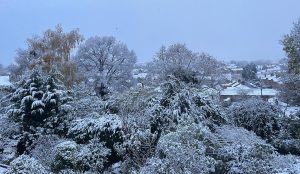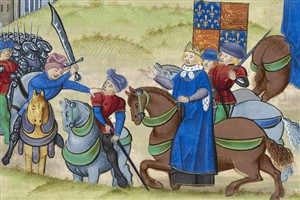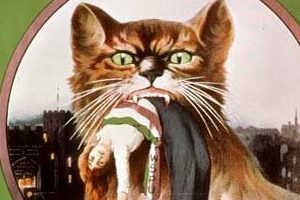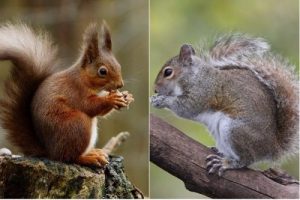
SQUIRRELS – RED OR GREY, I LOVE THEM!
Welcome to my first blog, which is all about squirrels.
As you may guess from my website logo and the title of this article, I am rather fond of the little furry creatures, which probably goes back to me being a child in the 1960s and being a member of an iconic club (more about that later). However, I didn’t know many facts about them, so I did some research and here are a few of the things I discovered:
Grey squirrels are native to North America and were intentionally introduced into Britain by us in the mid-19th century. They have flourished and spread to the detriment of our native red squirrels because they are stronger and more adaptable and also carry squirrel pox, which is harmful to red squirrels, but not to the grey ones. We are now trying to control them and re-introduce our red, indigenous species.
It is illegal to import, keep, or release grey squirrels in Britain unless you have a licence to do so. If you rescue a grey squirrel, you are not allowed to release it back into the wild so the best thing to do is find an animal rescue centre that does have a licence to do so.
Grey squirrels are often trapped and shot on private land. They may even end up on the dinner table!
Red squirrels are native to Britain but are only now found in Scotland, Wales and a few locations in England. Apparently, there is an urban population in Newcastle.
Red squirrels are protected and there are specific breeding areas that were set up to increase their population.
Squirrels hold food in their front paws and, when not feeding or resting, they are scratching and washing. They are a haven for fleas.
They are diurnal (active during the day).
Squirrels could be the key to helping stroke patients avoid brain damage. Researchers in the US have discovered that when squirrels hibernate, a protective process occurs in their cells that allows their brain to function with reduced blood flow and oxygen. This intrigues me as my research indicates that squirrels don’t fully hibernate. They will sleep during very cold days, only coming out now and again to search for their hidden stash of food.
These are just a few facts. There is so much more to be found on the intranet if you want. An excellent source of information is the Young People’s Trust for the Environment (www.ypte.org.uk). I shall be visiting this site again.
Now for the less serious side of squirrels:
My ‘better half’, TJ and I live in the Malvern Hills, in an upside down house so our lounge looks out to the hills and trees at the bottom of our garden.
We have two grey squirrels who live in these trees. I have called them Nuts and Raisins, mainly because they attempt to raid the bird feeder. Our dogs don’t particularly like this, and go on squirrel alert, barking through the glass patio doors at them. Nuts and Raisins don’t take a lot of notice though, and we are going to have to think of a deterrent, as the birds need their food, particularly in the colder weather. I hope that the cold weather will be the best deterrent.
When the dogs first saw the squirrels, they just stood, transfixed and it was so funny. It was as though they couldn’t believe the sheer nerve of them to be in their eye line. Now, they treat the sight of a squirrel the same as they do for the mouse that visits the downstairs bird table, or any cat that dares to walk past our front gate – they go bonkers.
One of the best things for me is watching Nuts and Raisins leaping through the trees. They are so agile and beautiful in motion. Also, seeing them bury conkers is a hoot as they constantly check all around them to see if anyone or anything is looking. Apparently, they only pretend to bury their nuts/conkers/acorns, if they think they are being watched.
TJ isn’t too keen on the holes left in the lawn when spring arrives, but sometimes the conkers aren’t recovered by the squirrels and we get sprouting trees. My view is that we need more trees, so that is a good thing.
Then, of course, we have the celebrity squirrels.
Squirrel Nutkin
A red squirrel who appeared in stories by Beatrix Potter. She also wrote about a grey squirrel called Timmy Tiptoes, but he was never as popular (probably because he was grey). Strangely, I saw a Timmy Tiptoes book in a local charity shop today.
Tufty Fluffytail
Elsie Mills MBE created this iconic character in 1953 and the Royal Society for the Prevention of Accidents featured Tufty in stories to introduce safety messages for children in a way they could understand. In 1961, The Tufty Club was created and I was a member during the 1960s and wore my badge with pride. Who else remembers the kerb drill – “Look right, look left, look right again. If all clear, quick march!” Even better, on watching a rerun of Life on Mars, I noticed my all time hero and heartthrob, Gene Hunt, was disguised as Tufty – be still my beating heart! If you want to read more about Tufty, visit the ROSPA website where there is a whole section devoted to him (www.rospa.com/about/history/tufty/).
Secret Squirrel
This was a cartoon spy squirrel created by Hanna Barbera in 1965. How many of you remember, “Shh, Secret Squirrel.” I still use it.
All this leads to my choice of logo – a red squirrel, in specs, reading a book. As I have to name all creatures, please meet Stanley. He is perfect for Tyler’s Tales and for my autumnal colour scheme.
I know many people see squirrels, particularly grey ones, as a pest and, yes, they can be. However, they are also funny, cheeky and cute – I just love them.
© Janice Tyler, November 2017

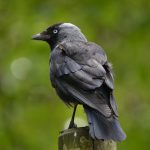 Next Post
Next Post